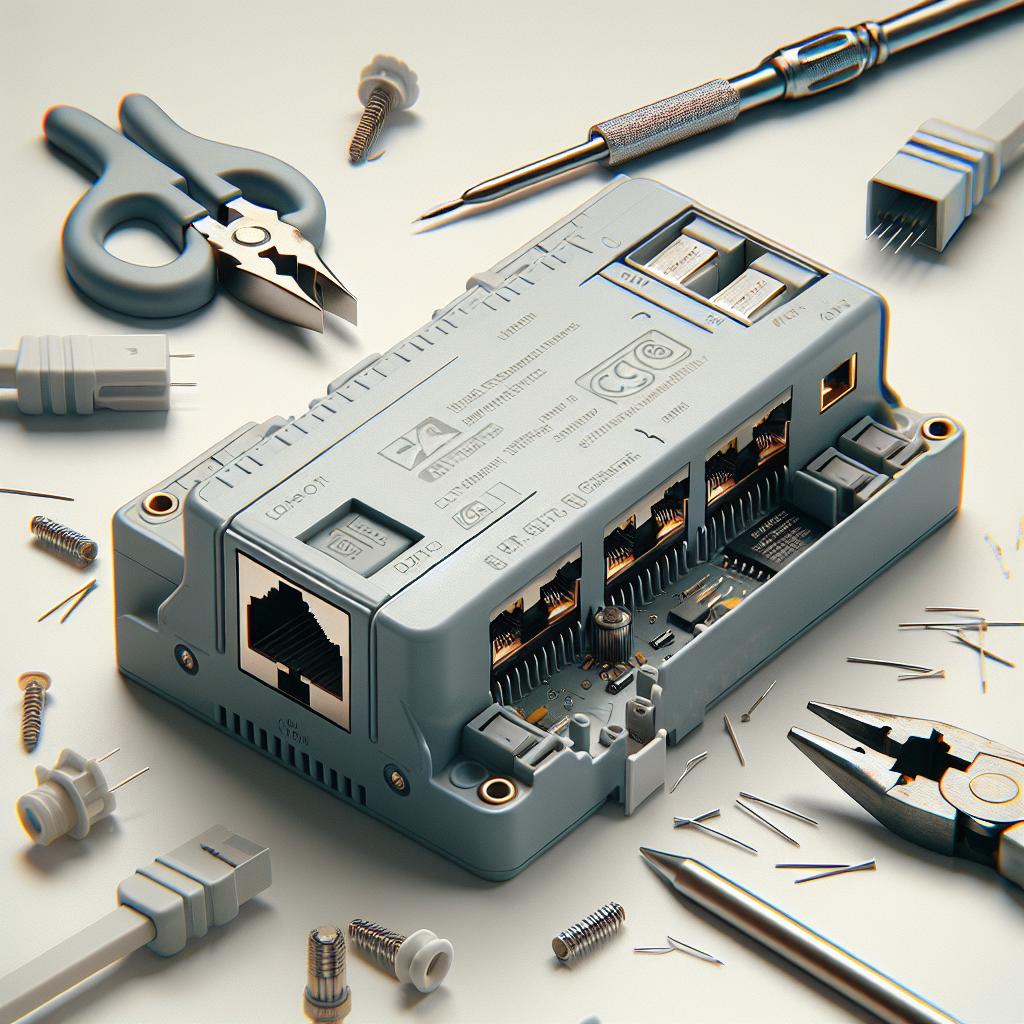In the modern era of technology, a stable internet connection is crucial for both personal and professional activities. Ethernet splitters are handy devices that allow multiple devices to share a single Ethernet connection. However, sometimes they can cause connectivity issues, disrupting your smooth online experience. Let’s delve into how you can fix an Ethernet splitter that is causing connection issues.
Understanding Ethernet Splitters
Before we dive into the troubleshooting steps, it is essential to understand what an Ethernet splitter is and how it works. An Ethernet splitter allows two Ethernet signals to share a single cable by splitting the cable into two separate connections. However, it is important to note that an Ethernet splitter does not provide additional bandwidth; it merely splits the existing bandwidth between the two connected devices.
How Ethernet Splitters Work
| Splitter Type | Function |
|---|---|
| Passive Splitter | Divides a single Ethernet cable into two connections without additional power. |
| Active Splitter | Requires power and can amplify or manage the signal to minimize loss. |
Common Issues with Ethernet Splitters
Types of Problems
- Connection Drops: Intermittent loss of connection can be frustrating.
- Slow Speeds: Reduced internet speeds might be noticeable.
- No Connection: Complete lack of connectivity.
How to Fix Ethernet Splitter Issues
1. Check Physical Connections
Start by checking all the physical connections. Ensure that the Ethernet cables are securely connected to the splitter as well as the devices. Loose connections are a common cause of network issues.
2. Test Each Cable
Faulty Ethernet cables can often be the root cause of connectivity issues. Test each cable individually by connecting it directly to your device and bypassing the splitter.
3. Swap the Splitter
If testing each cable does not resolve the issue, consider swapping out the splitter for a new one. Sometimes, the splitter itself can be defective.
4. Update Network Drivers
Outdated or corrupt network drivers can also cause connection issues. Update your network drivers to the latest version to ensure optimal performance.
5. Check Router Settings
Ensure that your router’s settings are configured correctly. It is crucial to have the proper settings to manage multiple devices connected through an Ethernet splitter.
Router Configuration Tips
- Navigate to your router’s settings via a web browser.
- Ensure DHCP (Dynamic Host Configuration Protocol) is enabled.
- Check for any firmware updates for your router.
6. Use an Ethernet Switch
If you continue to face issues, consider using an Ethernet switch instead of a splitter. An Ethernet switch can manage multiple connections more efficiently and provide better performance.
7. Minimize Interference
Ensure that there isn’t any significant interference around your network setup. Other electronic devices, particularly wireless ones, can cause signal interference.
Advanced Troubleshooting
Network Diagnostic Tools
Use network diagnostic tools to pinpoint the root cause of the issue. Tools like ping tests, trace routes, and network monitors can provide valuable insights.
Professional Help
If you have tried all the above steps and are still experiencing issues, consider seeking professional help. Network specialists can often identify and resolve complex issues that might not be immediately apparent.
Conclusion
Troubleshooting an Ethernet splitter that is causing connection issues involves systematically checking physical connections, testing cables, swapping splitters, updating drivers, and adjusting router settings. If the issues persist, consider using an Ethernet switch or seeking professional assistance. Regular maintenance and timely upgrades can ensure a stable and efficient network setup.
